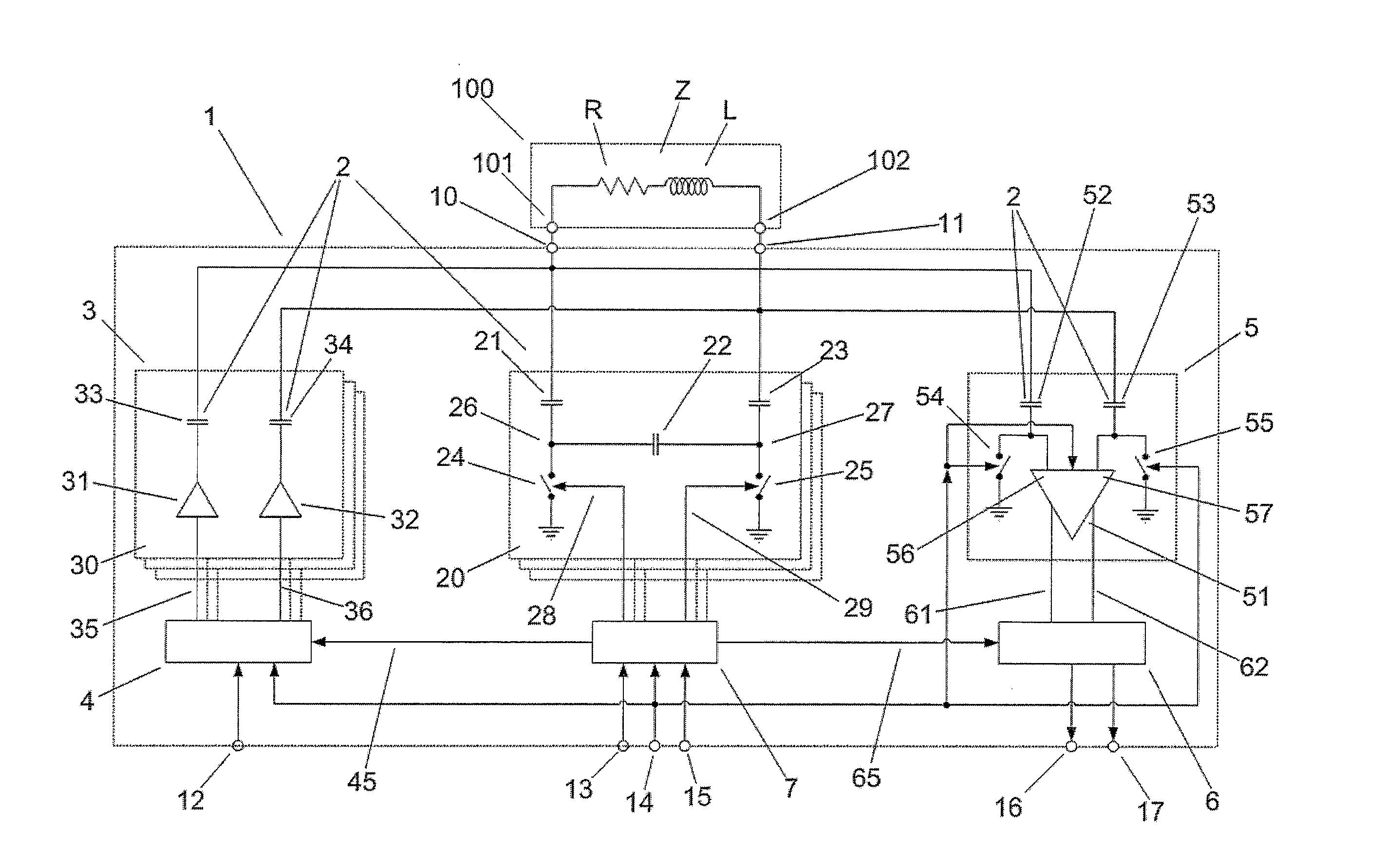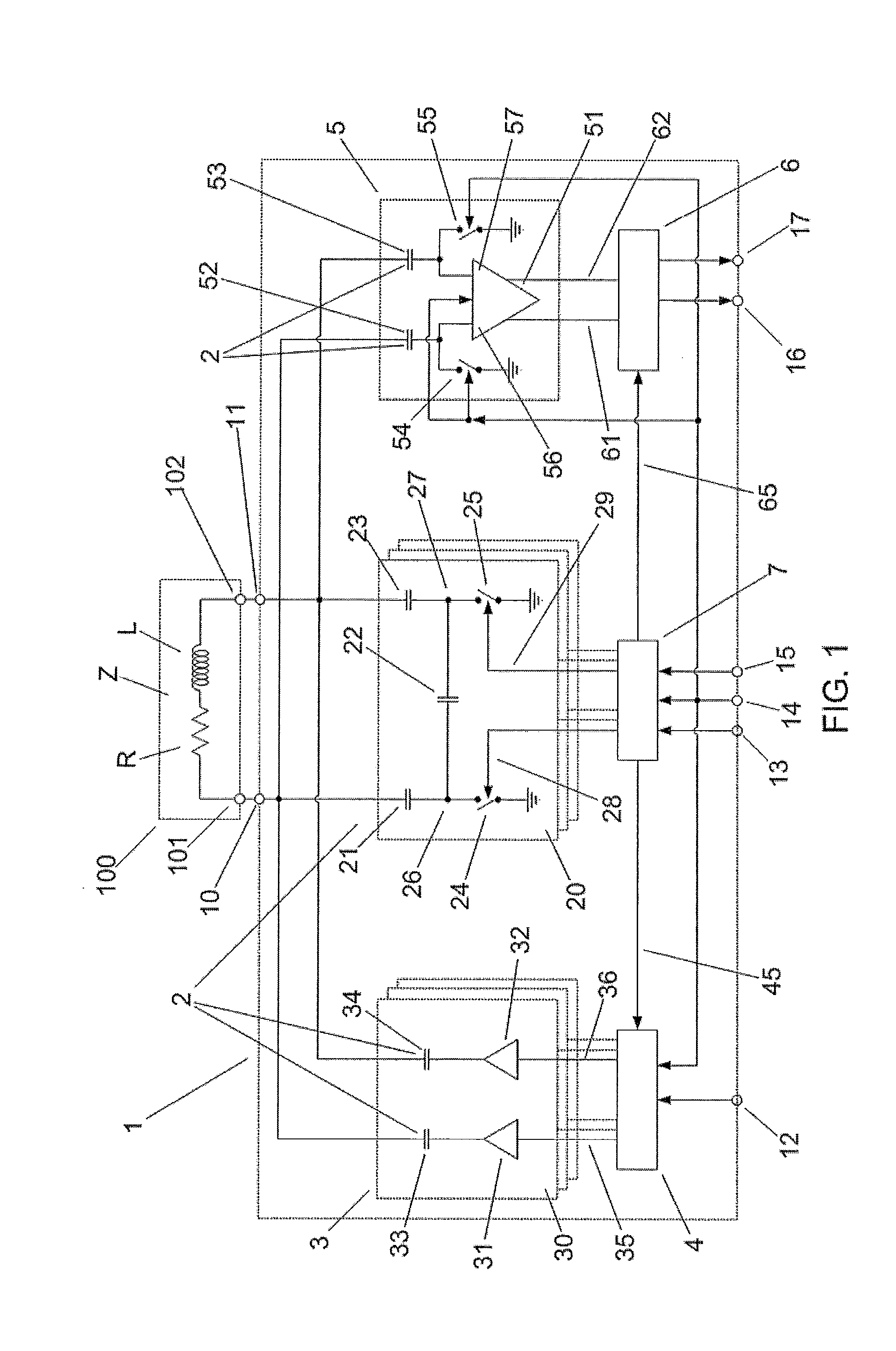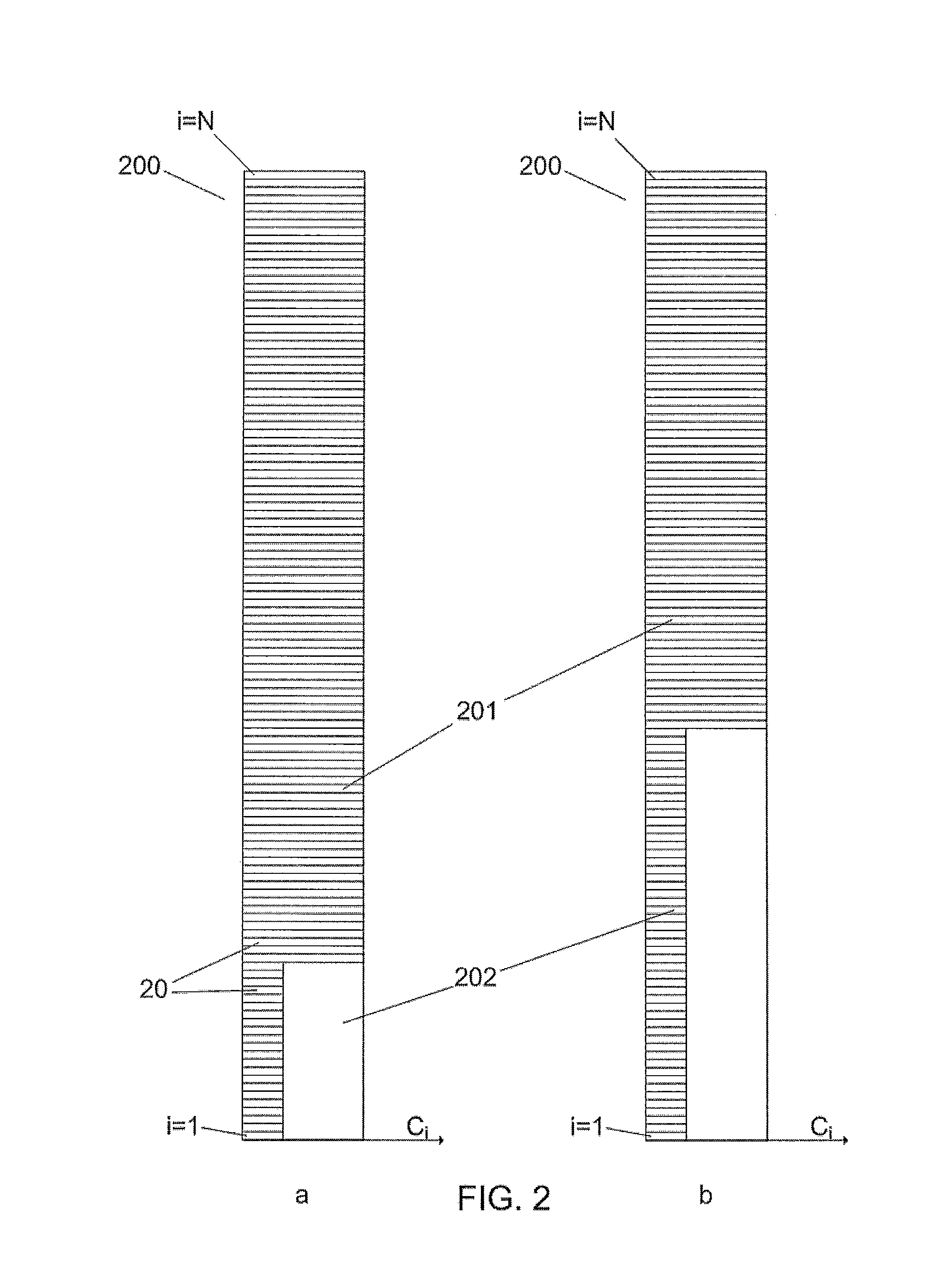RF transmitter for electrically short antenna
a short antenna and rf technology, applied in the field of radiofrequency (rf) transmitters, can solve the problems of low efficiency, short antennas inherently exhibit low radiation resistance and low efficiency, and many apparatuses do not have enough room for an antenna large,
- Summary
- Abstract
- Description
- Claims
- Application Information
AI Technical Summary
Benefits of technology
Problems solved by technology
Method used
Image
Examples
Embodiment Construction
[0045]The transmitter 1 shown in FIG. 1 comprises a reactive energy storage 2, a power amplifier 3, a modulator 4, a receiver circuit 5, a demodulator 6, a control unit 7, two antenna output terminals 10, 11 for providing an electric transmission signal, a clock terminal 12 for receiving a clock signal, a data input terminal 13 for receiving an information signal D (see FIG. 3), a mode input terminal 14 for receiving a mode control signal, a tuning input terminal 15 for receiving a tuning control signal, a receive data terminal 16 for providing a receive data signal and a calibration data terminal 17 for providing a calibration data signal.
[0046]The energy storage 2 comprises 257 storage circuits 20, one of which is shown in the figure, as well as a number of capacitors 33, 34, 52, 53 that are also comprised in respectively the power amplifier 3 and the receiver circuit 5. Each storage circuit 20 comprises three tuning capacitors 21, 22, 23 and two tuning switches 24, 25. The tuning...
PUM
 Login to View More
Login to View More Abstract
Description
Claims
Application Information
 Login to View More
Login to View More - R&D
- Intellectual Property
- Life Sciences
- Materials
- Tech Scout
- Unparalleled Data Quality
- Higher Quality Content
- 60% Fewer Hallucinations
Browse by: Latest US Patents, China's latest patents, Technical Efficacy Thesaurus, Application Domain, Technology Topic, Popular Technical Reports.
© 2025 PatSnap. All rights reserved.Legal|Privacy policy|Modern Slavery Act Transparency Statement|Sitemap|About US| Contact US: help@patsnap.com



